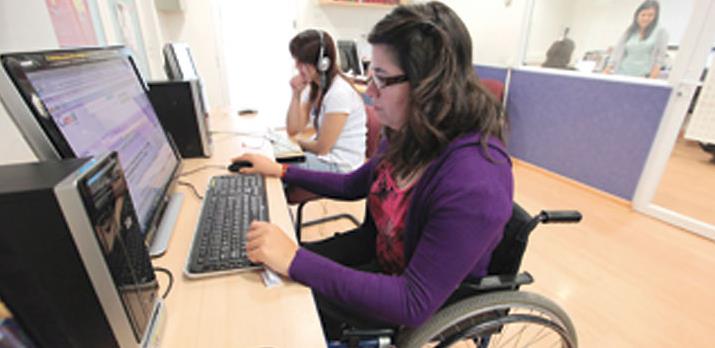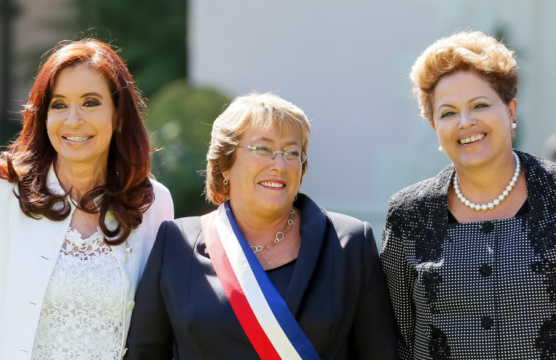What Roles are Women Playing in Mexico’s Drug War?
What roles are women playing in Mexico’s brutal drug trafficking war?
A Daily Publication of The Dialogue
The Covid-19 pandemic will set back Latin American and Caribbean women’s participation in the work force by a decade, according to a new report by the U.N. Economic Commission for Latin America and the Caribbean. The rate of female employment in the region fell to 46 percent in 2020 from 52 percent a year earlier, while the rate for men dropped to 69 percent from 73.6 percent over the same period. What are the most significant factors explaining the plunge in the women’s employment rate last year, and what consequences does the drop have for the regional economy and social dynamics? Are the underlying reasons for the decline temporary or structural? Is the trend likely to be reversed soon, and what tools do governments have to create good job opportunities and, ultimately, better well-being for women?
Alicia Bárcena, executive secretary of the United Nations Commission for Latin America and the Caribbean (ECLAC): “Latin American labor markets have been characterized by a structural segmentation that has traditionally concentrated women in sectors of the economy with lower wages and more precarious working conditions. Before the pandemic, one in two women were working in sectors of greater risk in terms of job loss and drop in income. The closure of borders, restrictions on mobility and the fall in international trade have had a strong impact on women as workers and entrepreneurs in the tourism and manufacturing sectors. Paid domestic work, which employed one in 10 women in the region, was one of the hardest hit, with one in two women in this sector in some countries losing her job. Furthermore, the closure of schools and care centers, as well as the transfer of health care to households given the enormous pressure on health systems, have increased demand for care in households. Faced with an unfair organization of care and the sexual division of labor, women have absorbed this additional burden and are facing greater barriers to participation in the labor market. It is key to implement fiscal stimulus packages designed to protect women’s incomes, to incorporate sectors with large female work forces into the recovery process and to promote affirmative actions to help women participate in driving sectors of the economy. It is also necessary to invest in the care economy to move toward a better distribution of time, resources, benefits and services, with a focus on the principle of co-responsibility between men and women and between the state, the market and families.”
Joyce C. Wong, senior economist in the regional analytics and strategy division at the International Monetary Fund’s Middle East and Central Asia department: “As the IMF has shown, countries in Latin America and the Caribbean made momentous strides in boosting women’s participation in the work force over the last 30 years. In 1990, only 44 percent of women in Latin America and the Caribbean participated in the labor force, compared to 52 percent in 2019. In addition, the share of women with a college education now exceeds that of men in several countries. Despite this progress, gender gaps remain large. The Covid-19 pandemic threatens to roll back this progress, given its disproportionate impact on women. Women are overrepresented in the informal sector, which has weaker social insurance, and even when formal, women tend to be in jobs with lower ability to telework. At home, women face an unequal distribution of housework chores and child care responsibilities. Policymakers must act decisively to limit scarring. This could entail extending income support to the vulnerable, preserving employment linkages, providing incentives to balance work and family care responsibilities, improving access to health care and family planning, and expanding support for small businesses and the self-employed. Elimination of legal barriers against women’s economic empowerment is also a priority. In the long term, policies should focus on creating conditions and incentives for women to work. Particularly effective are gender-responsive fiscal policies, such as investing in education and infrastructure, subsidizing child care and offering parental leave. There could be sizable economic gains from durably increasing labor participation of women in LAC. According to IMF estimates, most countries in the region could gain more than 10 percent in GDP per capita if women participated in the market at the same rates as men.”
Ana Basco, integration specialist at the Institute for the Integration of Latin America and the Caribbean (INTAL) of the Inter-American Development Bank: “Latin America is facing one of the most challenging moments in its recent history, which has caused a reduction in female employment. Among the most significant reasons are the labor informality levels existing prior to the pandemic and the fact that precisely the most feminized sectors have been the ones worst affected by the crisis. There are other factors, however, that also played a significant role in women’s unemployment. First, telework, whose main objective was to reduce virus transmission, has had a negative impact on women’s employment, as most feminized jobs are not able to be done via telework. In addition, access to technological devices and Internet connectivity are key for teleworking, two aspects in which women are behind in comparison to men. Moreover, the pandemic is accelerating the rise of the digital economy, even in the least-developed regions, such as Latin America. This advance is generating a greater demand for technological skills, but recent research indicates that women study fewer careers associated with new technologies in comparison to men. The increased demand for these skills further contributes to deepening the labor gap. School closings also had an unbalanced effect among parents, as most family responsibilities and educational support fell on women, reducing their time for paying jobs. It is essential to promote public policies that increase female participation in the formal economy and improve digital skills among women. It is key to adopt a gender approach in all areas of the economy, such as foreign trade, which can be a crucial factor in reducing these labor inequalities. We must envision this crisis as an opportunity to develop an overcoming regional agenda that addresses these challenges in an articulated, equitable and intelligent way.”
Paula Tavares, senior legal and gender specialist at the World Bank: “Impacts of the Covid-19 pandemic on labor markets have resulted in increased unemployment, job losses and income insecurity for millions of men and women, with female workers disproportionately affected. Disruptions posed by the crisis on employment, child care and school routines have further deepened pre-existing gender gaps in the work force, to a large extent due to the types of industries, jobs and caregiving responsibilities women are predominantly involved in. Women in Latin America hold a larger share of informal, vulnerable and low-paid jobs. They are also overrepresented in sectors most affected by the pandemic, such as retail, hospitality and tourism, many of which entail personal interaction and cannot be done remotely. In conjunction, the unequal share of unpaid care work in the home results in time-poverty for female workers, who need to juggle domestic and professional responsibilities. With social isolation measures, school closures and limited access to child care, this burden has further increased, particularly for working mothers. The combination of factors has resulted in a disproportionate impact of the pandemic on women’s employment compared to men’s, as well as a projected gap in recovery. According to a recent World Bank study, while temporarily unemployed workers started to go back to work as the crisis evolved, the difference in job losses between women and men persisted. In this context, a legal and regulatory framework supportive of women’s economic participation such as examined by the World Bank’s Women, Business and the Law, as well as policy measures and responses that target women and reduce the gendered impacts of the crisis, can help ensure an inclusive recovery.”
Valentina Sader, assistant director and Brazil lead at the Atlantic Council’s Adrienne Arsht Latin America Center: “While the election of Vice President Kamala Harris in the United States, the legalization of abortion in Argentina and, most recently, the confirmation of Ngozi Okonjo-Iweala as Secretary General of the World Trade Organization represent major wins for women across the globe, gender inequalities have heightened in the past year. From increasingly higher rates of gender-based violence in Mexico and Brazil to major setbacks in terms of women’s employment, the Covid-19 pandemic has reinforced the long path that remains in closing the gender gap in Latin America and the Caribbean. With lockdown measures in place, unpaid child care and housework have fallen disproportionately on women. Sectors hardest hit by the pandemic account for 56.9 percent of female employment in Latin America and 54.3 percent in the Caribbean. Women are also overrepresented in the informal sector, unprotected and deeply affected by efforts to contain the pandemic. Reducing gender inequalities in the labor market will boost productivity and growth, while also reducing poverty and shrinking income disparities. The disproportionate challenges women face in times of crisis is exactly why representation matters. Bringing women to the decision-making table, and back to the work force—equitably—is more imperative than ever. Women can play a fundamental role in driving regional economies to recover post-Covid-19 and to exponential, inclusive growth thereafter. Thus, addressing gender issues should be at the core of economic recovery post-Covid-19.”
 The Latin America Advisor features Q&A from leaders in politics, economics, and finance every business day. It is available to members of the Dialogue’s Corporate Program and others by subscription.
The Latin America Advisor features Q&A from leaders in politics, economics, and finance every business day. It is available to members of the Dialogue’s Corporate Program and others by subscription.
What roles are women playing in Mexico’s brutal drug trafficking war?
How are women faring in Latin America? Where has progress been made and how has that been achieved?
Would this be a more compassionate, more peaceful planet if more of it were ruled by women?
 During the pandemic, women in Latin America and the Caribbean have lost jobs at higher rates than have men. // File Photo: Mexican Government.
During the pandemic, women in Latin America and the Caribbean have lost jobs at higher rates than have men. // File Photo: Mexican Government.

